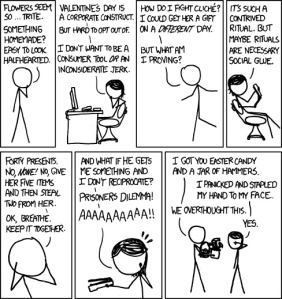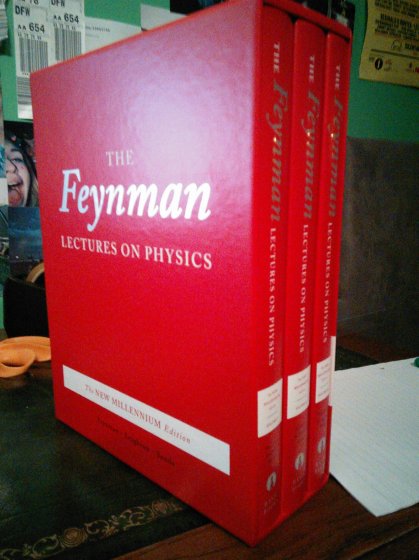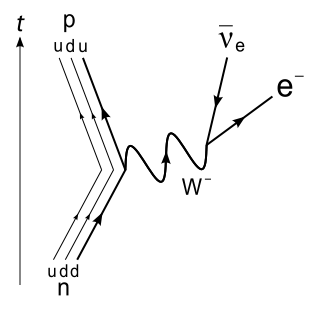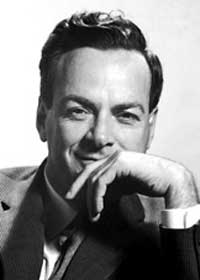dailysliceofpi
Science, Technology, Engineering, Maths, and a bit of Art, apparently.
“You wouldn’t illegally download a house…” Wait, What?
This is a house that has been 3D printed by the WinSun Decoration Design Engineering Co. in China.
They had a spare 24 hours, and with it they built a total of 10 houses. Or rather, printed them.
The company print the separate pieces in a factory, using a concrete aggregate formed from recycled construction materials and industrial waste. They then bring the panels to the construction site, and slot them together; like a really heavy Lego.
The houses cost less than £3000 to construct. They are environmentally friendly. They are cost-effective. They are evidence that we are in the future.
What Felix Baumgartner REALLY saw from the edge of space.

I’ll start with an apology- this blog has been everything but daily, really. I guess the university application season started and other things took over. But since that has sort of died down (until exam season at least) I thought it would be good to get things going again.
Neil DeGrasse Tyson tweeted this observation of Felix Baumgartner’s ‘edge of space’ jump that inspired me to write something about it.
In the first picture above, you can see the images that have been televised and otherwise publicised since the BASE jumper performed his ballsy feat. Just before his jump, he spoke to his microphone, “I wish you could see what I see.”
At first, I thought, ‘silly Felix, we can see what you see, through the magic of television’; but in reality, we saw an obscured view of what Felix really saw.
Here’s the science: wide angle camera lenses cause curvature in horizontal lines in the images the camera records. If these horizontal lines are above the vertical midpoint of the lens, there is a ‘downwards’ curve. Conversely, of the horizontal lines are below the midpoint, they curve ‘upwards’.
In the images we saw, the Earth’s horizon was above the midpoint, and hence you can see the ‘downwards’ curve.
A kind gentleman of the internet ‘did a photoshop’ on the image Tyson tweeted, and provided for us the second photograph in the image above.
This image shows what Felix Baumgartner REALLY saw. He saw a horizontal horizon. In reality, Felix wasn’t THAT far above the Earth’s surface.
If scaled down to the size of a desktop globe, Felix was only about 1mm above the surface. not very high at all.
So that’s surprising, and a little humbling, really.
I wonder how high you’d have to be to actually see the blue marble AS a marble? I don’t know if that’s something that can be worked out theoretically, or would have to be done experimentally.
In other news, it’s just hitting me how significant Felix Baumgartner’s jump was. Like, that was a long fall, and he was going so fast. And he landed on his feet. I guarantee he hasn’t paid for a single drink since.
Dale Chapman
How Long is the Coastline of Britain?
“Beautiful, damn hard, increasingly useful. That’s fractals.” Benoit Mandlebrot
The idea of fractals began when Benoit Mandlebrot asked, “How long is the coastline of Britain?” It sounds simple enough, measuring things has never been the top complaint of young students, but think about the physical process of measuring. If you drove around the coasts of England taking the distance you travelled to be your length your answer would be smaller than if you measured every cm of the coast with a ruler. You can keep increasing your accuracy till your measuring each stone, each grain of sand, each atom…
Mandlebrot simplified this issue using fractals. Fractals are infinitely complex self-similar patterns. The self-similarity means that if you zoom into the shape you will see the same complex pattern. By applying the idea of fractals to natural objects like a coastline that would show a similar pattern at different magnifications Mandlebrot achieved much more accurate approximations.
Fractals have many uses from understanding and modelling landscapes and clouds to creating and storing incredible computer graphics.
Finally, it is very important to not forget the main success of fractal geometry. The pictures look so pretty!!!
Natasha Javed
The beauty of game theory, pt. 1: An introduction to Prisoner’s Dilemma
(2)
Game theory is a mathematical discipline that is almost unheard of in the British a level curriculum, especially in non-private colleges. It is also a discipline that is immensely important in a number of different fields, such as economics and political science. “So why, Cameron-” I hear you saying, “-is it shunned so by our teaching staff? For decision maths is a module available for any student taking Further Pure AS to take!”. Well, guys, i hate to break it to you, but decision maths is incredibly dense. It’s also difficult to teach, which might go some way to explaining it’s lack of inclusion in the majority of people’s further maths AS level.
However, as indicated by the title, I do find a certain beauty in certain aspects of this certainly entrancing subject. Prisoner’s dilemma is one of those aspects. Part one, in fact.
And thus we begin our…
View original post 590 more words
The paradox of interesting numbers
In mathematics, all numbers belong to sets. This set might be Real numbers, Imaginary numbers, or Rational numbers, and so on and so forth.
The set of Natural numbers (ℕ) is the set of numbers used for counting. For example, “This is my 49th blog post”. 49 is a natural number because I have counted all the way from 1 to 49. There is a slight argument as to where the set of natural numbers starts, though. Some argue it starts from 1, because you can’t count the absence of anything, nothing. The modern description of natural numbers starts from 0, though, so as to include every non-negative integer.
One day, a man somewhere must have pondered upon a number being uninteresting. So let’s look at the natural numbers, starting from 1, the traditional way
1 is the first natural number
2 is the only even prime number
3 is the first odd prime number
4 is the first multiple of 2, other than itself
6 is the first perfect number
7 is the first natural number that cannot be expressed as the sum of three square numbers
8 is a fibonacci number
9 produces interesting multiples (12345679 * 9 = 111111111)
10 is the base number of the decimal system
11 is the first multiple digit number that is a palindrome
12 is the highest number that is only one syllable long
And so on and so forth. Every number has at least one fascinating quality. Numbers are incredible.
The paradox goes that apparently has nothing interesting about it, is 12407.
We have to count through 1, 2, 3, 4, 5, 6, 7 all the way to 12407 before we find a number that has no apparent interesting feature about it.
But that’s interesting.
The number 12407, because it is not interesting, is interesting in itself.
So, if 12,407 is interesting because it isn’t interesting, what’s the next uninteresting number?
It doesn’t matter what that number is, because the fact that it is the second lowest uninteresting number makes it interesting.
And this carries on, and on, and on.
This paradox should be kept in mind, to remind us that every number is special, and exciting, and beautiful.
Dale Chapman
The science of corking
My brother is a chef. He’s been a chef for a good ten years now, and he has imparted a fair amount of wisdom unto me in that time. He introduced me to the basics, such as why we add salt to food, and that sort of thing. Things I just didn’t really get until then. Sometimes, he’d tell me about something actually really interesting. Corking is one of those things.
Apparently, wine can go off. The thing is, there’s this whole idea of wine getting better with age. And very often, this is the case. Fine wines can be intentionally aged to add subtle changes to the flavour of the wine, and usually removes some of the harshness. However, given enough time, any wine will go off. Except, in the wine world, this is called corking.
When those not wholly involved with the culinary industry hear the word corking, it brings up images of bits of cork floating about in the wine. This isn’t the case. Corking, or cork taint, is caused by the above compound, 2,4,6,-trichloroanisole, or TCA. So here’s what typically happens:
A group of chemicals called chlorophenols are absorbed by cork trees through pesticides and wood preservatives, which automatically suggests that the rate of corking in wines has increased largely in recent times, when spraying plants with chemicals has become commonplace. When chlorophenols react with natural airborne fungi in the air, they form chlorinated anisole derivates, or TCA.
It is the presence of TCA that taints the wine, and we say that a wine ailed by TCA is corked. The nuisance of all of this is that you can only tell if a wine is corked after is has been produced, bottled, aged, and opened. After all of that has been done, it just seems like a great waste of good grapes.
Dale Chapman
The number 1, is my #1.
The number 1 is really great. You can do a lot of great things with it, for instance: if you take the 18947th root of 1, you get 1. how onederful.
1 raised to the power 1, is also 1. any number raised to the power 0, is 1. Even 0 itself. That’s right, 1 is so fundamental and so powerful that raising nothing to the power of itself, is 1. Conversely, when we take the natural log of 1, we return to 0. 1 is mysterious. Further to this, when we find the factorial(!) of 0 (where the factorial of a number is found by multiplying that number by every number before it until you return to 0) we get 1, such that 0! = 1.
Arguably one of the most famous identities in mathematics, Euler’s identity, shows how some of the most exciting numbers in maths all relate back to 1.
If we take e, a transcendental number, which is the base of the natural logarithm, and an important number in the study of continuous compounding interest; raise it to the power of i, the square root of negative 1 (which makes the life of an engineer a lot easier), and π, the ratio between the circumference of a circle and its diameter, we get -1. It’s all marvelously coincidental.
Historically, the number 1 is so important. When humans, or anything that even bore resemblance to humans, started counting things, they started by counting 1 of something. We’d be so lost without 1.
1 helps every other number to identify itself. You can multiply any number you like by 1, and you’ll get that same number. It is so useful, versatile, and beautiful.
I love 1, and so should you.
Check out this video from Sal Khan about the identity property of 1. I understand it's basic, but I think that all too often we fail to think about how useful fundamental knowledge can be.
Identity Property of 1: Identity Property of 1
Dale Chapman
Richard P. Feynman
My Feynman Lectures have arrived!
So I recently turned 18, which is exciting. For my birthday, my fabulous brother and my as-of-fairly-recently-sister-in-law sent me a £100 Amazon gift card, which is also exciting. I suppose I could have saved the money and used it tactically throughout the year, but what would be the fun of that? I decided to splash the whole amount out on The Feynman Lectures on Physics boxed set. While it’s true I could have bought the three volumes in paperback for a fair amount cheaper, I wanted the nice little box of hardbacks. I mean, these books are to physicists what Shakespeare’s Works are to English Literature students. It’s all very exciting.
I was so happy to receive my amazon parcel today, that I guess I wanted to post something about Richard Feynman, and why he is so great.
Over the summer holidays, I took out ‘Don’t You Have Time To Think?‘ which is a compilation, put together by Feynman’s daughter, of many of the letters that Richard sent and received over the years. It includes sensitive letters to his mother, and to his wife- as well as notes to people of high authority, which often upset them. Coming away from this book, I found the man to be something quite marvelous.
I can’t say I read all that much, but there was just something about this man that was all very exciting.
Richard Phillips Feynman was a remarkable physicist, educator, and bongo player. He was eccentric, as any real physicist should be, as well as massively innately clever. He loved what he did.
Feynman was the pioneer of a ‘little’ concept known as nanotechnology (I sure hope that pun translates), as well as quantum computing, a field which is rapidly expanding as of late. At one point in his career, Feynman decided to refrigerate some helium to see what would happen. When he supercooled some Helium, he discovered a property of the fluid that he coined as ‘superfluidity’. That is to say that, when cooled to a relatively very low temperature, helium appears to not have any viscosity.
The most important piece of work of Richard Feynman, in my opinion, is his diagrams. Anyone that has studied Physics past the stage of GCSE will have drawn one of Feynman’s famous diagrams.
Beta Minus (B-) decay
Feynman was awarded a Nobel Prize for Physics, jointly with two friends:
“for their fundamental work in quantum electrodynamics, with deep-ploughing consequences for the physics of elementary particles”.
This included, of course, his diagrams. Feynman was the first to model the idea of the ‘weak decay’, a concept which allows physicists to describe most of everything that happens in the universe, which is quite something.
There are a lot of books written both by and about Richard Feynman, and rightly so. The man was curious, clever, and charismatic. He was everything a physicist should be, and then some.
It is for these reasons that Richard Feynman has been listed in the top 10 physicists of all time by Physics World, and he is definitely in my top 5.
Global Warming and the BBC
I was watching the BBC News this evening, and one of the main bulletins was about Global Warming. I knew I would have to brace myself for another almost meaningless news report that discusses the issue in the least scientific way possible. I always find that mainstream media almost insults the intelligence of their viewers – I am perfectly aware that the entire public does not possess high levels of scientific knowledge (nor is it even necessary), but this does not mean that everything needs to be oversimplified to the point of which, there remains little or no science at all!
I spent the five minutes just trying to understand the point of the bulletin, as far as I could tell, it was just regurgitating the same story that they normally do – ‘The Earth’s temperature is rising due to CO2 emissions caused by human activity, the Government calls for reductions in everyone’s carbon footprint’. The report claims that although temperatures have been increasing in comparison to the last few decades, since around 2002, temperatures on Earth have apparently decreased. That was pretty much it. No explanation, no real insight into anything affecting anyone, they simply produced a pretty graphic of the temperature change over the decades, and then showed some video clips of some awful weather conditions experienced in the Americas and China.
I still do not really know what the report intended to explain…
Anyway, the general public is aware of the basics surrounding global warming, and they are also aware of the simple things they could be doing to help reduce the impact of our horrible CO2 emissions. They are however, very ignorant too, and are unwilling to make the minor changes in their lifestyles. News reports from broadcasters like the BBC do not help the matter either – if they actually provided some real science bulletins, perhaps our public would respond a bit differently.
Not too sure why I turned this into a blogpost, it is more of a rant than blogging about scientific knowledge for today, so apologies. Perhaps I will research the current state of Global Warming, and return with a well-informed and constructive post!
Monica xoxo








